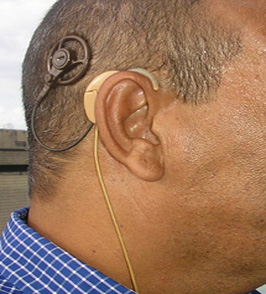The beginnings of human language are tied to its evolution and history.
Our pre-historic predecessors modified their posture to the point of standing straight up and having their hands free to use. This new body disposition allowed them to use tools. And by having social interaction, new or references were created for known things and new concepts.
This gave way to the existence of communication codes, or languages; at first a bit rudimentary, and then complex. According to some theories, in the period in which these languages began appearing, the human phonetic apparatus was not fully developed. Thus, a part of communication had to be done via signs.
Even though a large part of communication was done in a visually/gestural manner, it’s believed that deaf people were considered to be possessed, that’s why they were subject to trepanations to try and take the evil out of them and in doing so, “healing” them.
In olden times there were references like the law codex of MANÚ (I century A.C. approx.) in which it was stated that deafness was a result of faults executed by the person in previous lives. As a consequence it was dictated that deaf people were excluded from inheritances.
However, laws dictated that the deaf person’s family should support the deaf person. In ancient Egypt numerous studies were made about the possible origin of deafness.
In some cases, deafness was related to some problem in the brain, and explains the possibility that sound may be something carried by air; because the body produces it and somehow receives it. At around this same time, Greeks and Romans also had their theories.
(To be continued)














